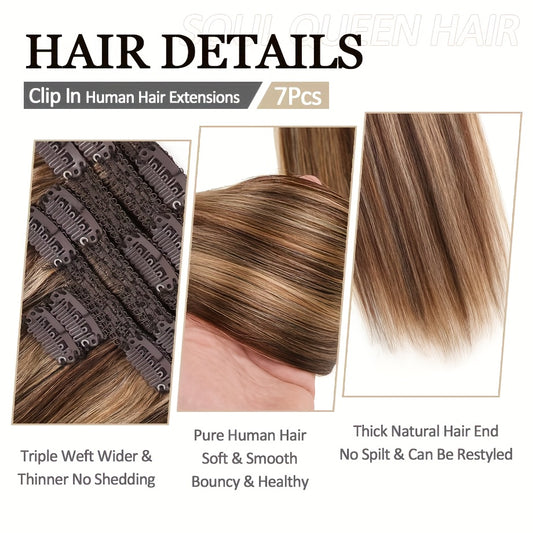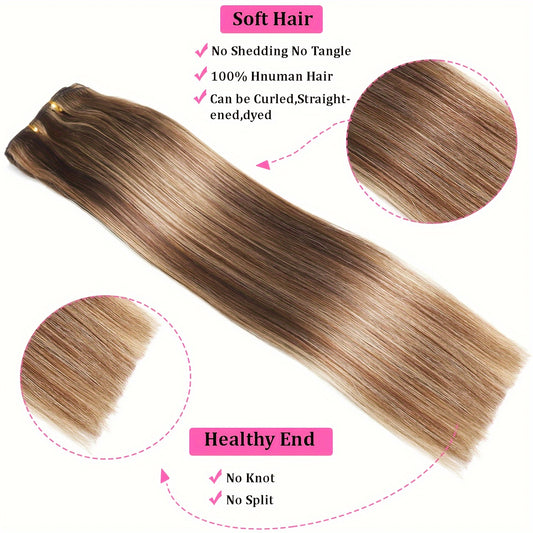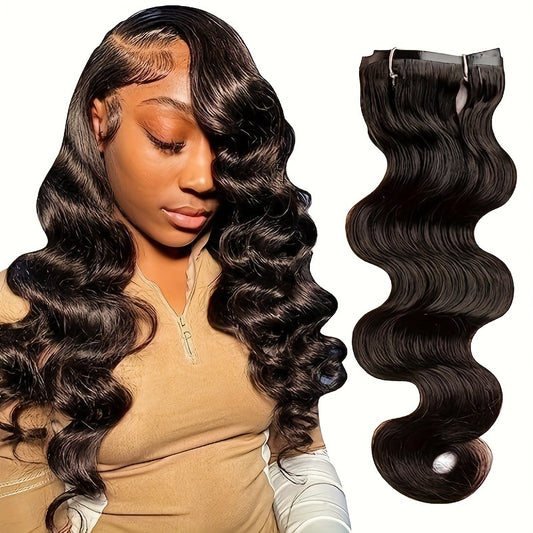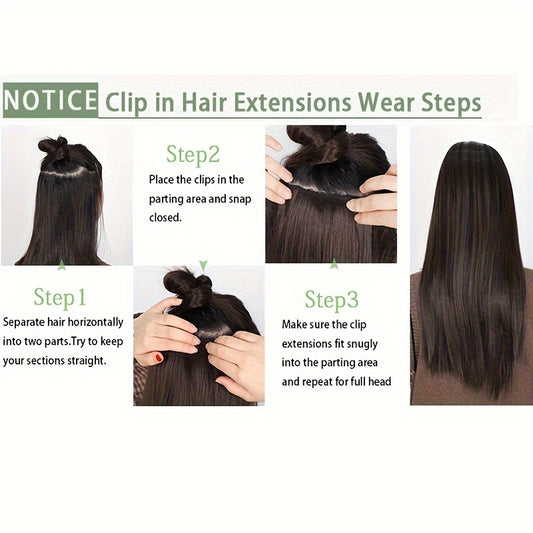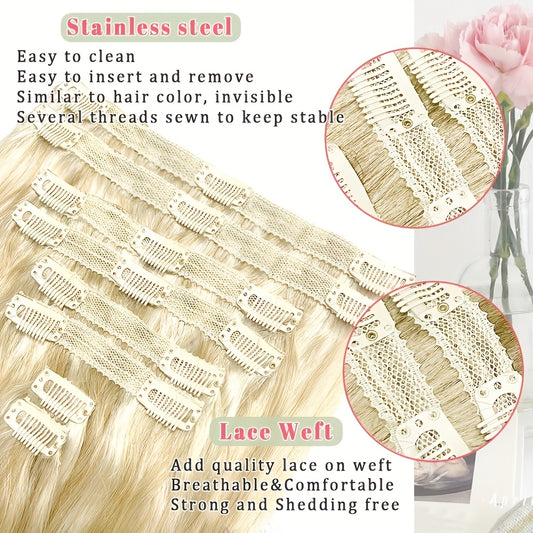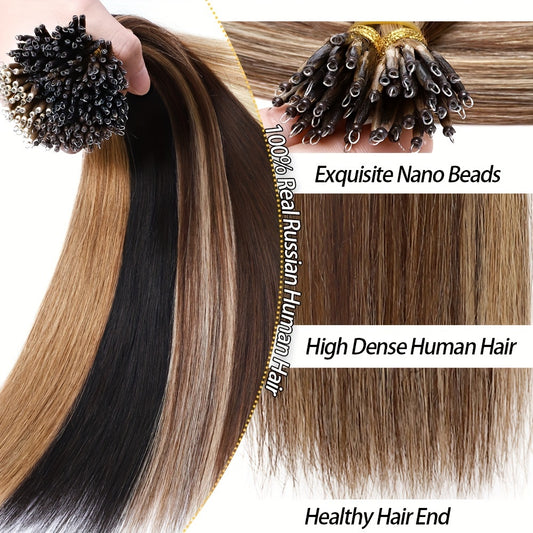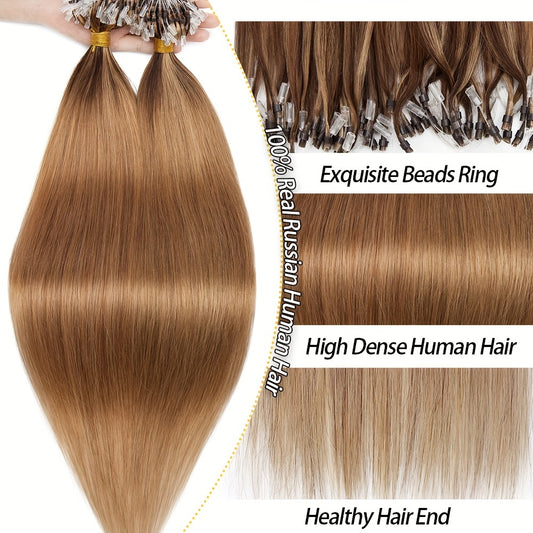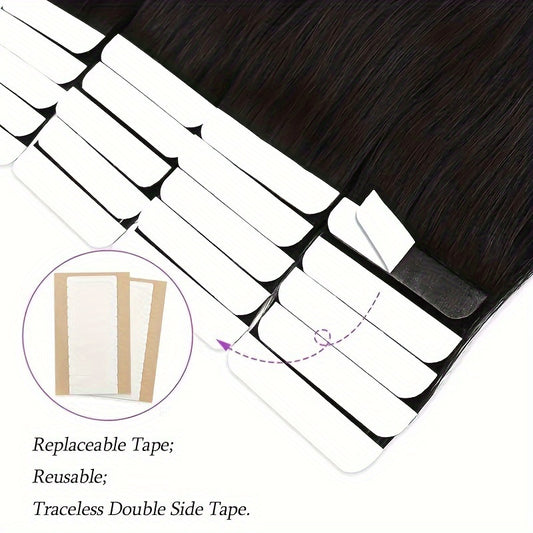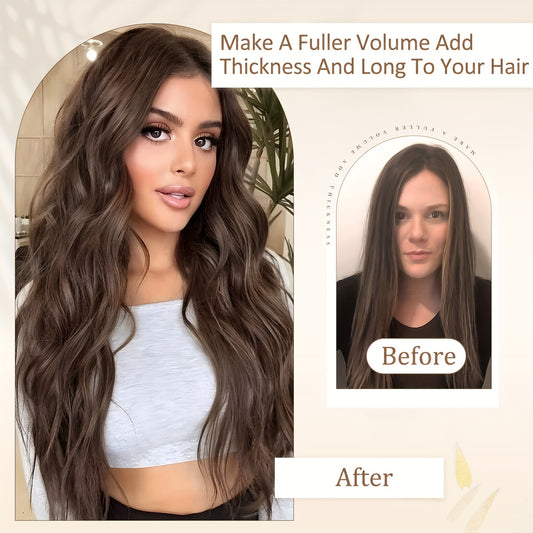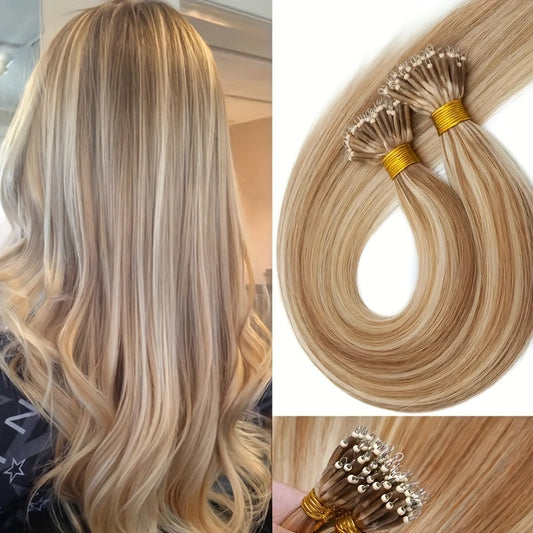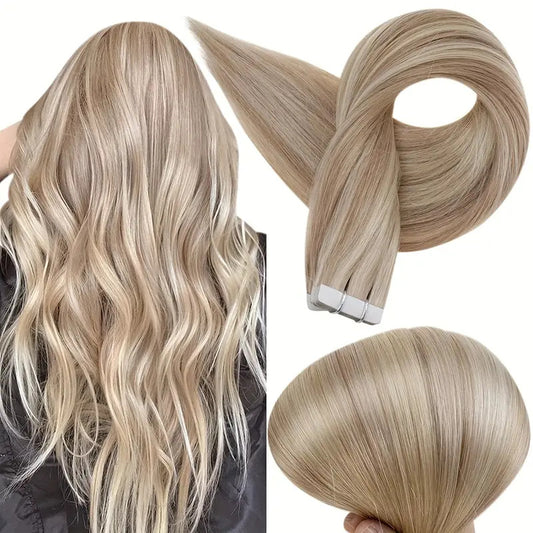About 18 Inch Human Hair Weft/Weave Hair Extensions
Eighteen inches is a recognizable long length. On most frames the ends rest from mid chest to the upper ribs in straight finishes, slightly higher in waves, and higher still in tight curls because curls compress visual length. Weft based systems spread hair along tracks for a continuous, dense outline that looks deliberate in photos. With correct grams and a tidy install, an 18 inch weave reads polished without requiring the upkeep of very long sets.
What 18 inches looks like on real heads
On an average height person with a regular neck length, 18 inches in a straight finish lands around mid chest. On petite frames the ends sit a little higher; on tall frames or shorter necks they sit a touch lower. Waves shorten apparent length by roughly an inch; tighter curls remove more. The camera field that audiences notice—the lower third of the silhouette—is firmly in frame at this length, so end behavior matters more than at 14 or 16 inches. If the outline is wispy, the style reads unfinished even if the top is perfect. This is why grams and draw (end fullness) deserve attention before shopping by shade.
Outerwear touches the hair more often at 18 inches than at shorter lengths. Scarves, collars, and bag straps create friction at the nape. The fix is simple: brush after removing layers, keep oils off roots for grip, and place a micro drop of serum on mid lengths and ends only.
Why choose a weft over clip ins
A weft spreads hair weight across a row. With either a braid base (traditional sew in) or a beaded track (hand tied beaded row), the mass is distributed and the perimeter looks continuous. Clip in sets are removable daily and excellent for casual changes, but wefts suit wearers who want a stable, multi week style with fewer daily steps. An 18 inch sew in weave extensions result shows as longer, smoother, and denser along the bottom edge than lighter daily systems. If your routine involves professional styling or you simply prefer a set it and live in it approach, weft methods are efficient.
Wefts also allow precise color and texture custom matching. A stylist can combine bundles, mix rooted pieces with flats, or place a darker lowlight weft under a lighter one to mimic dimension. The row system also offers quiet grow out: move ups every six to eight weeks keep placement balanced without constantly rethinking the map.
Weft designs at a glance
Machine weft: thicker band created by sewing hair together with a sewing machine. It is durable, can be cut to size, and handles higher density per row. It is visible if placed too high on thin coverage areas, so the crown layer must remain generous. Machine weft is common for robust sew ins and for clients who need volume and longevity.
Hand tied weft: very thin base tied by hand in small stitches. It lays flat, feels light, and blends under a minimal top layer. Hand tied wefts cannot be cut through the seam without unraveling, so stylists fold at corners or choose panels in a variety of widths. They are popular for beaded row installs on fine or medium hair because the track remains discreet.
Flat or genius weft: hybrid design with a slim, cuttable seam that behaves close to hand tied but tolerates trimming like machine wefts. It solves two issues at once—flat lay and flexible sizing—so it is a strong option for 18 inch human hair weft installs that need precision around temples and curves.
Double weft: two wefts layered for extra density. It creates a plush hem per row at the cost of slightly more bulk. Double weft can be efficient for blunt, dense natural hair that would otherwise overpower a single layer in straight finishes.
Remy human hair and processing
Remy hair aligns cuticles in one direction. This alignment lowers friction so strands slide and resist matting. It also keeps shine natural, not glassy, because light reflects from an intact cuticle rather than from heavy coatings. For weft systems, Remy human hair extensions respond better to moderate heat, produce predictable curl memory after cooling, and survive gentle wash cycles without frizzing quickly. Minimal chemical lifting, careful toning, and controlled silicone levels are quality markers. Heavy acid baths and thick silicone films can make hair look perfect on day one but wash away unevenly and shorten lifespan.
For an 18 inch weave, cuticle health shows most at the ends. The row concentrates movement at the bottom third and cameras scrutinize that edge. Choosing true Remy and respecting heat discipline keeps the perimeter convincing for months.
Where 18 inches lands and how to measure
Measure from behind the ear to the mid chest to visualize a straight finish landing point. For everyday waves subtract about one inch from that mark. For defined curls subtract more. Try the measurement while wearing a favorite blazer or neckline to judge proportion. If the length frames the lapel or collar elegantly, it will likely photograph well. Buyers who live in waves can also place the bottom track slightly lower so the hem still reads long once curled.
A quick daylight photo of your current hair from front, side, and back paired with a reference card for your target shade makes reorders and adjustments simple. If you are between levels, slightly lighter is easier to tone darker or cooler than lifting a darker bundle lighter.
Grams and bundle planning
Bundles are measured by weight. Grams control end authority. At 18 inches, the bottom edge is in every frame, so an adequate grams plan is the difference between a wispy outline and a cinematic hem. Subtle fullness and improved ends on layered cuts usually require about ninety to one hundred twenty grams across the head (often one to one and a half bundles). Everyday full head density that photographs well yet feels light lands around one hundred thirty to one hundred sixty grams (roughly one and a half to two bundles depending on weft design). Plush hems for blunt cuts, thick strands, humidity, or studio lighting need around one hundred seventy to two hundred twenty grams (two to three bundles).
Distribute grams by head zone. The nape row sets the base; the occipital row provides the body; the crown-adjacent row defines coverage quality. A stylist may layer a heavier machine weft on the nape and hand tied or flat wefts on upper rows for minimal bulk with maximum density. The page can offer a grams-by-cut matrix: blunt lob equals higher grams, layered shoulder length equals medium grams, thick tapered natural equals higher grams, fine layered equals lower grams plus optional temple panels.
Draw and end behavior
Single drawn wefts taper softly toward the tips like natural hair. They brush into motion quickly and read airy. Double drawn wefts hold thickness deeper into the bottom third for a firm, salon fresh outline in straight or beveled finishes. At 18 inches, double drawn often photographs as more expensive because the hem line appears continuous under flash and bright daylight. Neither is mandatory: choose based on finish preference and daily styling time. If single drawn ends feel too soft for your eye, a micro trim of half an inch to one inch turns the edge square without sacrificing the idea of length.
Show proof in images. A back-of-head crop of ends at rest is more persuasive than adjectives. If only one draw is in stock, be candid and offer the trim guidance up front to control expectations.
Install methods overview
Traditional sew in with braids: the stylist creates narrow, flat braids (cornrows) as anchor paths, then sews machine or flat wefts onto the braids with a curved needle and thread. Pros: secure, familiar, handles high density, protects much of the natural hair. Cons: tension must be managed on fine scalps; drying the braided base fully after washing takes time.
Beaded row (hand tied): small silicone lined beads attach a foundation row to natural hair in horizontal sections; narrow hand tied wefts are then stitched to that row. Pros: flat, light, easy to move up, suitable for fine hair with proper spacing. Cons: requires precise sectioning, cannot cut the hand tied seam, and beads must be closed cleanly to avoid pinching.
Braidless sew in (beaded foundation plus thread): similar to beaded row but often uses machine or flat wefts sewn to the beaded foundation. Pros: flexible weft choice, cuttable seams with flat or machine wefts. Cons: like beaded row, tension and spacing are the art.
Hybrid maps: heavy machine weft on the nape for durability, hand tied on upper rows for minimal bulk, and a flat weft near the temples for comfort. Hybrids let the stylist match material to the head shape and lifestyle.
Sectioning and row placement
Row spacing: about a finger to a full inch between rows depending on head size and density. Avoid placing rows so high that the top layer thins and exposes seams when the wind lifts the hair. The crown layer is your concealment budget; spend it carefully.
Temple strategy: many realism issues appear at the sides. Use narrow wefts or trimmed flat wefts placed just far enough from the hairline to avoid visibility in tucks or behind-the-ear moments. One dedicated temple piece, slightly angled, can remove a hollow near the cheekbone and create a balanced frame in photos.
Curve conformity: hand tied and flat wefts curve naturally and are ideal for the occipital arc. Machine wefts lay best on flatter sections unless doubled and stitched with care. When curving a machine weft around a head shape, fold at corners rather than cutting whenever possible to avoid shedding at the cut edge.
Tension, comfort, and scalp care
Comfort signals success. Tightness that lasts more than a day, headaches, or pinching mean the foundation is too tight or beads pinch single strands. A good install feels secure but not painful. Distribute weight across many anchors, not a few. On sensitive scalps, reduce grams per row and add an extra row to keep tension low. Move beads a few millimeters during each refresh to avoid pressure on the exact same follicles.
Daily habits protect comfort. Do not sleep on soaking hair; dry the base fully to avoid odor and mildew. Use a silk pillowcase or bonnet to reduce friction. When brushing, support the row with the free hand and start detangling from the ends upward. Keep heavy oils off the root area; light leave in sprays and mid length serums maintain slip without breaking anchors.
Leave out vs closures and frontals
Leave out means you show your own hair over the top row. It looks the most natural on windy days and in close photos because the part and hairline are real. The tradeoff is heat exposure on the leave out and the need to match texture daily. A lace closure replaces the part area with a small lace piece and reduces heat on your hair but demands careful blending and lace care. A frontal covers ear to ear and can deliver dramatic hairline changes at the cost of more maintenance. For an 18 inch human hair weft plan that prioritizes simplicity, a well protected leave out with low daily heat is often the quiet winner.
If the leave out is fragile or chemically treated, reduce heat and consider a closure so recovery can happen while style remains consistent. The goal is not a single perfect photo; the goal is a routine that keeps both natural hair and extensions healthy across months.
Texture and pattern selection
Straight: sleek, easy to brush, and shows length most clearly. Body wave: the universal blender that tolerates single pass smoothing or expands into plush waves with low heat. Deep wave and loose curl: defined pattern out of the box; match to your own coil diameter for seamless stacking. Coily weft options: choose by diameter and shrinkage, not by generic labels; show both defined and brushed-out looks in proof images so buyers understand behavior.
At 18 inches, body wave is pragmatic for mixed routines because it lifts the hem slightly and reduces the number of hot passes needed to hold a shape. Straight is best for glass hair and razor sharp edges. Coily choices are for those who live in curls and value scale match over speed of brushing.
Color logic, undertone, and lowlight strategy
Undertone first—ash, neutral, warm—then depth. Check in daylight near a window. If you sit between shades, slightly lighter is safer because Remy hair accepts cooling or deepening with demi toners. Rooted and balayage wefts hide seams at the part and temples and mimic natural regrowth. When combining bundles, place a slightly deeper lowlight weft under a lighter one to create depth through motion without extra styling.
Edge cases: cool brunettes that read warm indoors should verify daylight and, if needed, glaze cooler briefly. Warm brondes that swing between sunlit caramel and indoor beige benefit from rooted gradients. Very deep browns with red cast should start neutral and tone cooler; lifting toward ash tends to raise cuticle and lower lifespan. For gray blending, choose a neutral gray and tune undertone with violet if yellow cast appears under certain bulbs.
Heat, tools, and finish control
Keep tools under one hundred eighty degrees Celsius or three hundred fifty Fahrenheit. One slow pass on a flat iron polishes better than many fast passes. For waves, use a one-and-a-quarter inch iron, let curls cool fully, then brush into one pattern. For blowouts, aim the dryer downward to align cuticles and use round brushes in the thirty five to forty five millimeter range for beveled ends. Mist flexible spray onto the brush rather than onto hair to preserve sheen. Finish with a pea of serum on mid lengths and ends only.
Cooling is not optional. Heat reshapes internal bonds but the pattern sets as the hair cools. Touching or brushing hot strands erases the memory you just created and invites more heat, which shortens life. The cooling rule is the cheapest way to extend longevity.
Wash and move up schedule
Weft wearers typically wash once or twice per week depending on scalp and product load. Rinse thoroughly, shampoo the scalp, let suds run through the wefts, condition from mid lengths to ends, rinse cool, blot with microfiber, and air dry as far as possible before finishing with low heat. Dry between rows carefully to prevent moisture pockets. Move ups or refreshes happen every six to eight weeks for beaded rows and roughly the same for braid bases depending on growth. During move ups, shift anchor points slightly and inspect clips, beads, and seams for wear.
A seasonal micro trim of half an inch resets the edge and keeps the hem looking deliberate at 18 inches. Small trims cost less than chasing perfect density with additional bundles and help hair photograph cleanly.
Shedding control and weft handling
Machine wefts tolerate trimming, but the cut edge should be sealed with weft sealant to minimize shedding. Hand tied wefts should not be cut through the seam; fold at corners or select the correct width to avoid unraveling. Flat or genius wefts are designed to be cut, but it is still wise to seal the cut end lightly. When sewing, keep needle passes close to but not through the weft seam to preserve strength. Do not over stack rows near the crown; let the top layer cover without strain.
Shedding increases when heavy oils saturate the seam, when heat is set too high, or when brushing pulls directly on the seam. Support the row with your free hand, start brushing from the ends upward, and reserve serums for the lengths, not the base.
Sleeping, workouts, and travel
Before sleep, brush gently, place hair in a loose braid or two, and use a silk pillowcase or bonnet. Do not sleep with wet rows. For high intensity workouts, secure hair in a low braid and a soft headband; after, allow sweat to dry and then brush. If workouts are daily and intense, discuss grams per row with your stylist to keep the foundation light. On flights, cabin air is dry; smooth a tiny drop of serum on ends, carry a satin pouch for temporary storage if needed, and refresh with a leave in mist after landing.
A pocket kit solves most issues: loop brush, small teasing comb, flexible spray, light serum, two spare beads if beaded row applies, curved needle and thread for emergency fixes if you are trained, and a few bobby pins. Simple tools beat heavy products.
Troubleshooting quick table
Weft visible in wind or under bright light: the top layer is too thin or the row is too high; shift the part slightly or move the row lower at the next refresh; add a narrow cover weft if needed. Ends read wispy in straight photos: request a half inch trim or plan double drawn next order. Tangling at the nape under coats: reduce heat cycles for a week, hydrate ends, and brush after removing outerwear. Tension discomfort: redistribute grams, add a row to reduce load per anchor, and vary bead positions at move up. Color looks right outside but off indoors: trust daylight and apply a short cool glaze only if needed.
Temple hollows visible: add a dedicated narrow temple piece trimmed on a slight diagonal. Row lift at corners: flatten fold angles and avoid excessive bulk at the turn. Drying time too long: gently separate layers with fingers while blow drying the base, then finish lengths at low heat.
Cost of ownership and value
Weft extensions distribute value over wear time. An 18 inch human hair weave that is maintained with moderate heat, proper washing, and scheduled move ups can last many months. Cost per wear compares favorably to repeated single appointment services, especially for clients who appear on camera, attend events, or want a consistent silhouette for work. Value also hides in time saved: once the map exists, daily styling is faster because the perimeter holds shape after cooling. Clear care guidelines reduce return trips to fix avoidable issues.
Repair beats replace. Re stitching a loose point, swapping beads, sealing a trimmed weft end, and micro trimming the edge all extend lifespan at low cost. Products can be simple: a heat protectant, a flexible spray, a light serum, a gentle shampoo and conditioner, and a clarifying step only when buildup appears.
Professional consultation checklist
Document scalp sensitivity, hair density, and lifestyle (workouts, helmets, headsets). Decide on method (sew in braid base, beaded row, braidless sew in) with a bias toward the least tension that still provides security. Choose weft types per row: machine at the nape for durability, hand tied or flat higher for flat lay. Map grams by haircut: blunt equals higher grams, layered equals medium grams, fine equals lower grams with temple support. Select texture for routine, not identity: straight for blowouts, body wave for mixed days, coils for defined wear.
Perform a daylight color match with undertone first, then depth; consider rooted or balayage for darker roots. Discuss move up schedule and daily habits: cooling rule, brushing methods, and product limits. Capture a reference photo after the first perfect finish for future benchmarks.
Photography, proof, and accessibility
Proof beats prose. Show front, side, back, and a cropped end view at rest in daylight for every shade. Photograph each color on at least two complexions and include a strand on a white card to neutralize background bias. Avoid color edits that push saturation or change undertone. For accessibility, pair shade names with numeric descriptors such as level 6 neutral brown so color blind users can map options. Ensure any online filters are keyboard reachable and announce changes to screen readers.
Alt text should include the power facts: 18 inch weft, texture, undertone, and draw, not only a poetic shade name. On mobile, avoid thin gray text on images; legibility creates trust.
Ethics, sourcing, and packaging
Responsible sourcing and processing matter. Clear statements about origin, fair compensation, and controlled processing build trust. Modest, recyclable packaging that still protects the wefts reduces waste. Including a care card with the cooling rule, heat limits, and washing rhythm reduces misuse. Offering spare beads, thread, or replacement clips extends life and shows commitment to ownership rather than one time transactions.
A brand that publishes grams calculators, texture guides, and daylight photos does more for customer success than a brand that offers slogans. The difference appears in reviews and repeat purchases.
Glossary of core terms
Weft: a horizontal strip of hair sewn or tied together to form a continuous track. Machine weft: thicker, durable, cuttable seam; good for strength and density. Hand tied weft: very thin, flat seam tied by hand; cannot be cut through the seam without unraveling. Flat or genius weft: slim, cuttable seam that behaves close to hand tied but allows trimming. Draw: how full the ends are; single tapers, double stays thick. Bundle: a package of hair measured by grams. Beaded row: install method using small beads to anchor a foundation track for stitching wefts. Sew in: method where wefts are sewn to braids or a beaded foundation.
Leave out: natural hair left out to cover the top row. Closure: a small lace piece that replaces the part area. Frontal: a lace piece from ear to ear replacing the hairline. Move up: scheduled appointment to reposition rows as hair grows. Perimeter: the visible outline at the ends. Temple piece: a small weft placed near the temple to remove hollows. Lowlight weft: a slightly deeper bundle used under a lighter one for dimension.
Summary
An 18 inch human hair weft weave provides a balanced long look with structured ends when grams and draw are chosen well. The length lands near mid chest for most wearers, reads elegant in straight finishes, and becomes plush in waves. A weft system—machine, hand tied, or flat—spreads weight along rows for a stable outline that photographs cleanly. Install maps vary (sew in, beaded row, braidless), but the rules stay simple: protect comfort, match texture to routine, match color by undertone in daylight, place rows where the top layer can cover them, cool before brushing, and keep products light at the roots.
Buyers who follow these small habits get predictable, repeatable results without complicated routines. That predictability is the value of a well planned 18 inch weave.
Customer reviews
- Chose 160 g for my 18 inch weft sew in and the bottom line finally looks solid instead of wispy; waves hold past my afternoon meetings when I let them cool. — Olivia Bennett, Chicago, USA ⭐⭐⭐⭐⭐
- The daylight color tip saved me; I picked a neutral rooted bundle and my part looks seamless indoors and outdoors without filters. — Marcus Reed, Austin, USA ⭐⭐⭐⭐⭐
- I have a sensitive scalp and went with a beaded row plus flat wefts; light teasing and good spacing kept everything comfortable from week one. — Kayla Simmons, Seattle, USA ⭐⭐⭐⭐
- Machine weft on the nape and hand tied up top was the right combo; the hair lays flat under a headset and still looks full at 18 inches. — Daniela Ruiz, Miami, USA ⭐⭐⭐⭐⭐
- Two narrow temple panels removed a hollow near my cheekbones; the micro trim advice made the hem read like a fresh cut. — Brianna Carter, New York, USA ⭐⭐⭐⭐⭐
- Shipping ran a day long so one star off, but the Remy quality is obvious and the weft seams are clean—move up at six weeks was easy. — Harper Collins, Denver, USA ⭐⭐⭐⭐
- I lecture on Zoom and the 18 inch perimeter photographs clean; no plastic shine, just a steady outline that stays neat on camera. — Jasmine Lee, San Francisco, USA ⭐⭐⭐⭐⭐
- Went with body wave because I switch between blowouts and loose curls; the row map from the guide made install simple. — Lauren Brooks, Phoenix, USA ⭐⭐⭐⭐⭐
- First weave for me and the grams guide matched my blunt cut; two bundles plus a temple piece did the trick at this length. — Nicole Foster, Atlanta, USA ⭐⭐⭐⭐⭐
- I removed my gym rows for a break and reinstalled with lighter grams; the comfort section helped a lot and the hem still looks strong. — Ethan Morales, Dallas, USA ⭐⭐⭐⭐⭐


